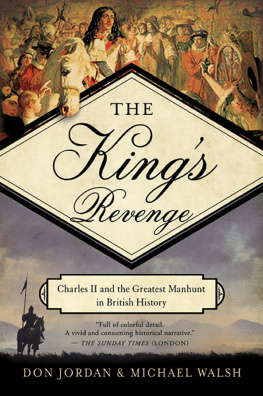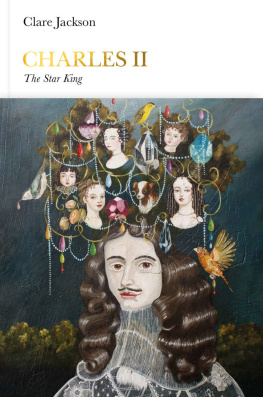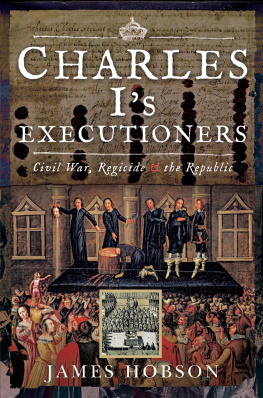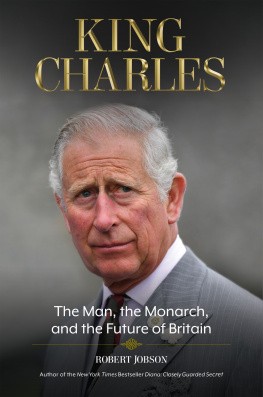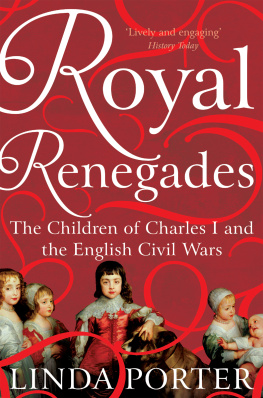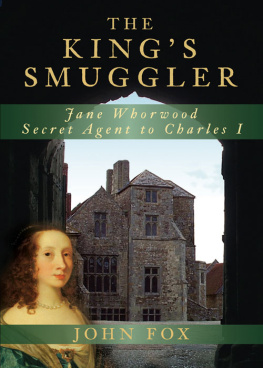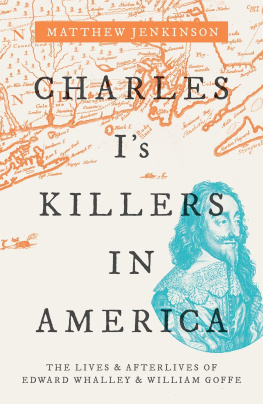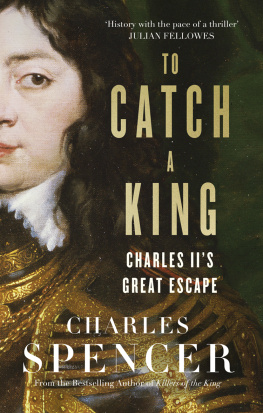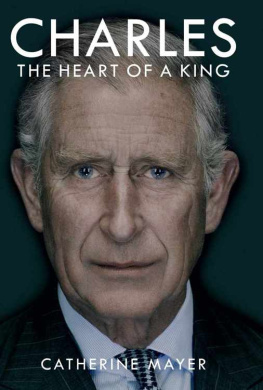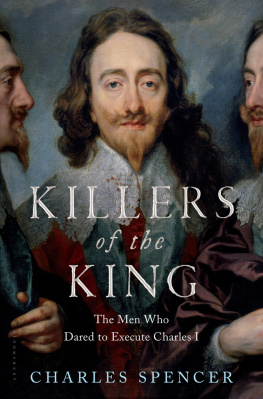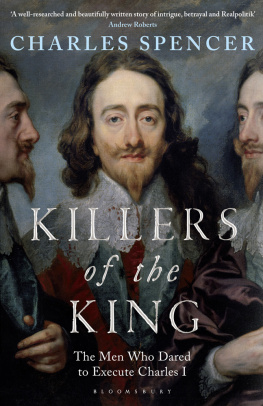
THE
Kings
Revenge
Charles II and the Greatest Manhunt in British History

DON JORDAN &
MICHAEL WALSH

PEGASUS BOOKS
NEW YORK LONDON
To Dian and to Eithne
The following is a list of all fifty-nine signatories to the warrant ordering the execution of Charles I (popularly known as the death warrant) in the order their signatures appear. The absence of a date of birth indicates it is not known. Where no cause of death is indicated, it should be taken as natural causes.
John Bradshaw: bap. 1602, lawyer, President of the High Court of Justice, died 1659; following the restoration, his body was dug up for posthumous symbolic execution in 1661
Thomas Grey: Baron Grey of Groby, born 1622, died 1657
Oliver Cromwell: b. 1599, soldier, politician, Lord Protector (16538), died 1658; posthumous symbolic execution 1661
Edward Whalley: major-general; fled to New England and died in exile 1674/5
Sir Michael Livesey: b. 1614, politician; fled to Netherlands and died in exile 1665(?)
John Okey: bap. 1606, soldier; fled to Germany 1660; captured in the Netherlands by George Downing; forcibly returned to England in 1661 and executed 1662
Sir John Danvers: b. 1584/5, politician, died 1655
Sir John Bourchier: b. 1595, politician; declared too ill for trial, died 1660
Henry Ireton: bap. 1611, major-general and political theorist; died of fever on campaign in Ireland 1651; posthumous symbolic execution 1661
Sir Thomas Mauleverer: bap. 1599, politician, died 1655
Sir Hardress Waller: b. 1604, army officer; sentenced to death 1660; sentence commuted to life imprisonment; died Mount Orgueil Castle, Jersey, 1666
John Blakiston: bap. 1603, politician, died 1649
John Hutchinson: bap. 1615, army officer; pardoned 1660 but after being implicated in 1663 Yorkshire rebellion was imprisoned in Sandown Castle, Kent, where he died in 1664
William Goffe: major-general; fled to New England 1660 and died in exile 1679(?)
Thomas Pride: army officer, died 1658; marked for posthumous execution but body left undisturbed
Peter Temple: bap. 1599, soldier and politician, sentenced to death 1660; sentence commuted to life; died in the Tower 1663
Thomas Harrison: bap. 1616, army officer and Fifth Monarchist leader, executed 1660
John Hewson: shoemaker, army officer, governor of Dublin; fled to Amsterdam 1660 and died in exile 16612(?)
Henry Smith: b. 1619/20, politician, sentenced to death 1660; commuted to life imprisonment; died Gorey Castle, Jersey, in or after 1668
Sir Peregrine Pelham: bap. 1602, politician, died 1650
Richard Deane: bap. 1610, army and naval officer; killed in action during naval Battle of Solebay against the Dutch 1653; following the restoration his body was disinterred and buried in a communal pit
Robert Tichborne: b. 1610/11, politician, sentenced to death 1660; sentence commuted; died in the Tower 1682
Humphrey Edwards: b. 1582, politician, died 1658
Daniel Blagrave: bap. 1603, politician; fled to Aachen in 1660 and died in exile 1668(?)
Owen Rowe: b. 1592/3, merchant, sentenced to death; died in the Tower before sentence confirmed 1661.
William Purefoy: b. 1580(?), politician, died 1659
Adrian Scroop: b. 1601, army officer, executed 1660
James Temple: b. 1606, politician; sentenced to life imprisonment on Jersey, where he died 1674(?)
Augustine Garland: b. 1603, lawyer and politician; though sentenced to death in 1660, he was transported to Tangiers; it is not known if an order for him to be returned and imprisoned in Southsea Castle was carried out; died in or after 1677
Edmund Ludlow: b. 1616/17(?), army general and politician; escaped to the Continent 1660, died Vevey, Switzerland, 1692
Henry (Harry) Marten: b. 1601/2; politician; sentenced to life imprisonment and died Chepstow Castle, 1680
Vincent Potter: b. 1614, army officer; sentenced to death 1660; died in the Tower before sentence could be carried out, probably in 1661
Sir William Constable: bap. 1590, army officer, died 1655; disinterred after the restoration and his body thrown into a communal pit
* Richard Ingoldsby: bap. 1617, army officer, politician; was pardoned and made a Knight of the Bath by Charles II for his role in capturing parliamentarian general John Lambert in 1660; died 1685
William Cawley: bap. 1602, politician; escaped to Switzerland and died 1667
John Barkstead: escaped to Germany 1660; seized in the Netherlands, forcibly returned to England and executed 1662
Isaac Ewer: army officer, died 1650/1
John Dixwell: b. 1607, politician; escaped to Germany (Hanau), then America; died in New England, 1689
Valentine Walton: b. 1593/4, army officer; escaped to Germany (Hanau); moved to Flanders or the Netherlands; died 1661(?)
Simon Meyne: bap. 1612, politician; sentenced to death 1660; died in Tower before sentence could be carried out, 1661
Thomas Horton: bap. 1603, army officer, died 1649
John Jones: b. 1597(?) army officer, executed 1660
John Moore: b. 1599, army officer, died 1650
Gilbert Millington: b. 1598, lawyer, politician; death sentence commuted to life imprisonment; died Mount Orgueil Castle, Jersey, 1666
George Fleetwood: bap. 1623, major-general; sentenced to be transported to Tangiers in 1664; unknown whether he was transported; may have emigrated to North America; date of death unknown
John Alured: bap. 1607, army officer, died 1651
Robert Lilburne: bap. 1614, deputy major-general; death sentence commuted to life imprisonment; died in prison on St Nicholas Island in Plymouth Sound, 1665
William Say: b. 1604, politician; escaped to the Continent 1660; lived in Switzerland, Germany and Netherlands, where he probably died around 1666
Anthony Stapley: bap. 1590, politician, died 1655
Sir Gregory Norton: b. 1603, politician, died 1652
*Thomas Challoner (or Chaloner): b. 1595, fled to Netherlands 1660; died in Middelburg a few months later, in August 1660.
Thomas Wogan: b. 1620(?), army officer; imprisoned in York Castle; escaped to Netherlands 1664; died in or after 1667
John Venn: b. 1586, politician, died 1650
Gregory Clement: b. 1594, politician, executed 1660
John Downes: bap. 1609, politician; reprieved from execution and imprisoned for life; died in the Tower in or after 1666
Thomas Waite: army officer; sentenced to life imprisonment; died imprisoned on Jersey in or after 1668
Thomas Scot (or Scott): politician; fled to Flanders 1660; subsequently returned to England under disputed circumstances and executed 1660
John Carew: b. 1622, politician and religious activist, executed 1660
Miles Corbet: b. 1594/5, politician; escaped to Netherlands, seized by George Downing along with Barkstead and Okey; forcibly returned and executed 1662
* Richard Ingoldsby and Thomas Challoner were exceptional in not being present when the king was sentenced, though they later signed the death warrant
Commissioners present when judgment was passed on the king but who did not sign the death warrant; numbering ten in total:
Francis Allen: merchant and politician, died 1658
Thomas Andrews: London merchant and Lord Mayor of London, died 1659
Thomas Hammond: b. before 1605, army officer, died 1651
Edmund Harvey: b. 1603(?), merchant; found guilty of treason 1660 but his life was spared; imprisoned 1661; died in Pendennis Castle, Cornwall, 1673
Next page
